How to use a dry closet?
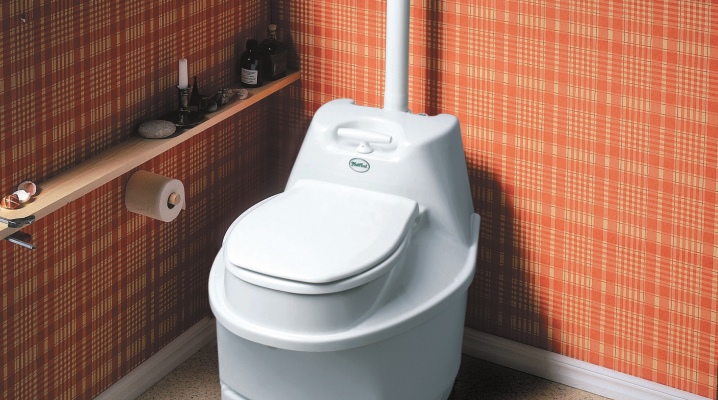
A trip to the dacha is not a reason to give up the usual comfort. A dry closet will help out where there is no centralized sewage system. Even a child can use this device. Dry closets are quite economical and do not require complex maintenance.
Fundamental rules
In appearance, the devices remind everyone of the familiar toilet bowl. They consist of several blocks: the upper one is a seat with a cover, and the lower compartment where waste is collected and recycled. Also, the model can have a water tank and ventilation system. It is not difficult to use a dry closet, but there are some nuances that differ depending on the type of construction.
There are three types of devices on the market:
- peat;
- chemical;
- electrical.
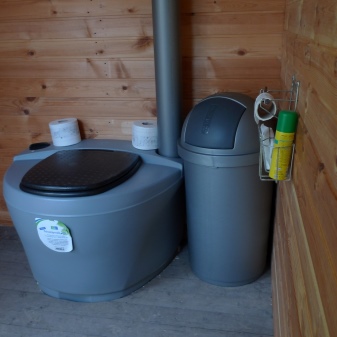
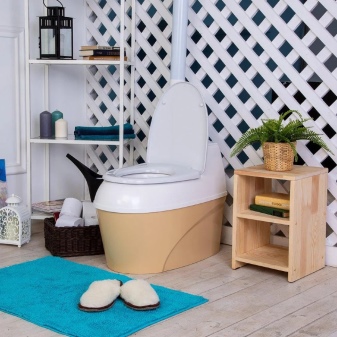
Peat
They use a biological filler. Peat is of natural origin and contributes to the processing of waste, which allows you to subsequently use the resulting mass as fertilizer. This type of dry closet works without flushing water. A hood is provided in the design to exclude fermentation in the lower compartments and prevent the spread of odors. Such devices are better suited for summer cottages, since they need separate ventilation or a well-ventilated room.
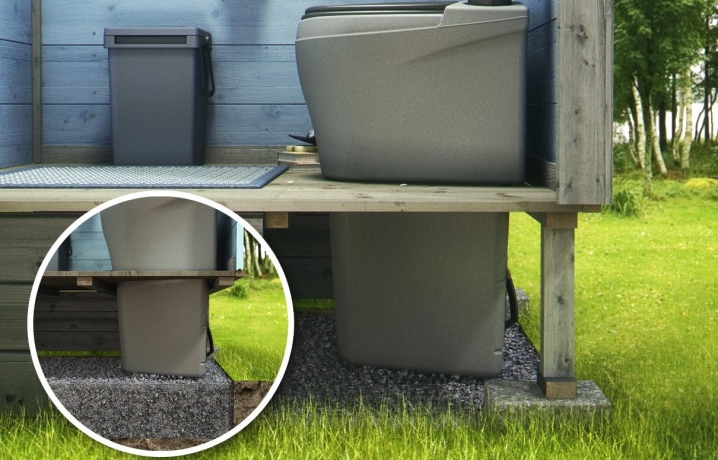
It is important not to forget to dispose of waste in a timely manner by sending it to the compost heap.... The frequency depends on the volume; on average, a 100 liter tank needs to be emptied every month if 3-4 people regularly use the toilet.
Peat models are the most affordable, but their installation will require additional manipulations. Also, due to the lack of drainage, the toilet is not very well cleaned, which leads to the appearance of unpleasant odors and bacteria.
Liquid
As a filler, chemical reagents or biocompounds with special microorganisms are used. Depending on this, There are two ways to dispose of waste:
- chemical liquids are toxic, therefore, they will need to be poured into a special pit, away from the site, or into the sewer;
- biological fillers are safe for the environment, waste can be discharged directly into the ground.
It is important to remember that plain toilet paper cannot be thrown into a toilet of this type, it does not decompose well, which leads to a rapid filling of the tank. The liquid toilet is completely autonomous, it is suitable for home, summer cottages and even for going on a picnic - there are small models of 20-25 liters, which are enough for about 50 uses.
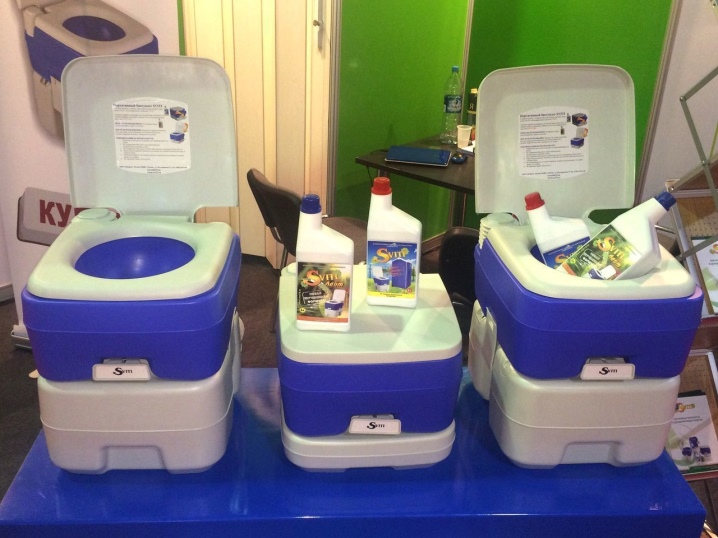
At the time of buying it should be borne in mind that you will have to regularly carry a full tank to the drain pit. Some people, due to age or health restrictions, will find it difficult to lift a container that is too heavy. In this case, it is better to consider models for 12-25 liters. They need to be emptied more often, but transferring is not so difficult. If there are no difficulties with carrying, then you can pay attention to toilets with a more capacious cistern.
Electrical
These are more complex devices, as the name implies, they require a network connection. Without access to electricity, such a toilet will not work. Upon receipt, waste is divided into two fractions - liquid ones are sent through a hose to a drainage pit or a special compartment, solid ones are dried using ventilation to a powdery consistency.Many models are also equipped with a range hood, so you don't have to worry about odors.

It is worth noting that you can only use the toilet in a sitting position.because the shutter to access the storage compartment is displaced by pressure on the seat. Dry closets of this type are suitable for a country house with year-round living. Their advantage is that you don't have to constantly think about where to put the waste, the number of cleanings is minimal, and there are no difficulties with emptying the tank.
User manual
The most popular liquid models... Electric ones are too expensive and require a network connection, while peat ones require ventilation or a separate ventilated room. The liquid toilet is easy to maintain at home, refueling does not cause problems, it is sealed and hygienic.
To use this device correctly, follow the instructions. You will need to purchase reagents in advance and fill the tank with liquid, and you will also need to fill in water separately - it is needed to wash off the waste. If necessary, you can use a pump to pump out the surplus if you plan to put the unit away for storage.
Do not forget about the timely processing of the toilet, then it will serve you longer. In addition, you need to provide a place in advance where you can drain the waste. The waste tank can be easily removed, you need to get it out, take it to the sewer pit, open it and empty it.
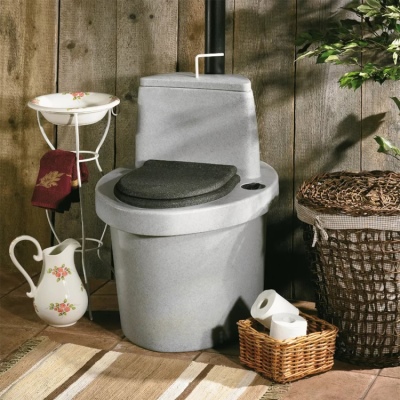
Preparation
Typically, models have two separate sections. One is for water, the other is for waste. Note that toilet fluid must be added to both tanks. Typically, approximately 150 ml per 20 liters is required. Use a special nozzle to pour the agent into the lower tank, without it you can accidentally damage the seal. It is advisable to use biocompounds... Unlike chemical reagents, they are non-toxic, do not harm the environment, and are easier to dispose of.

Usage
The toilet has a special valve that lifts the flap on the lower tank. Before using it for its intended purpose, it must be opened so that waste can enter the tank. Flushing is carried out using a pump. You need to pull the lever to drain the water. Throwing plain toilet paper down the toilet is not recommended. It does not decompose well and causes blockages. However, you can purchase paper for dry closets, which is sold in specialized stores. It is easily soluble, so there will be no problems with its use.
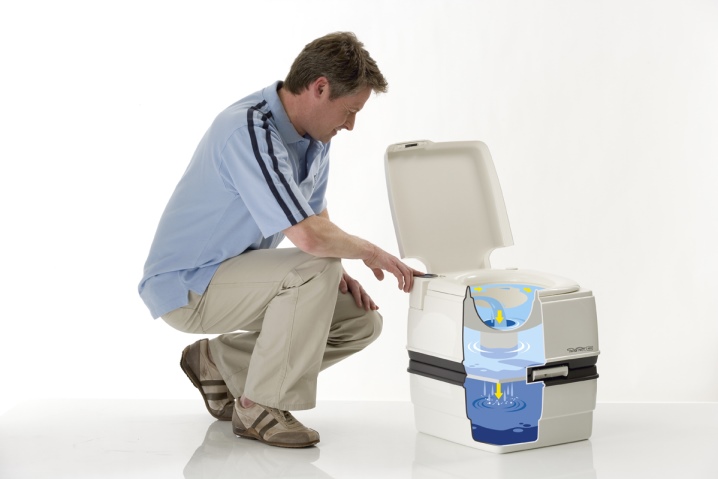
Emptying the tank
Some models are equipped with a special indicator that shows the level of fullness of the container. If it lights up red, it's time to drain the waste. In the absence of an indicator, you will have to monitor this yourself. Disconnect the full tank and take it to the waste disposal site.
To empty, insert the drain pipe, point it down and press the button of the opening valve - then the contents will not spill out. Water from the second tank can be drained through the neck by turning the container over. A pump should be used for complete emptying. If you are not planning to use the toilet for a long time, remember to empty both tanks completely.
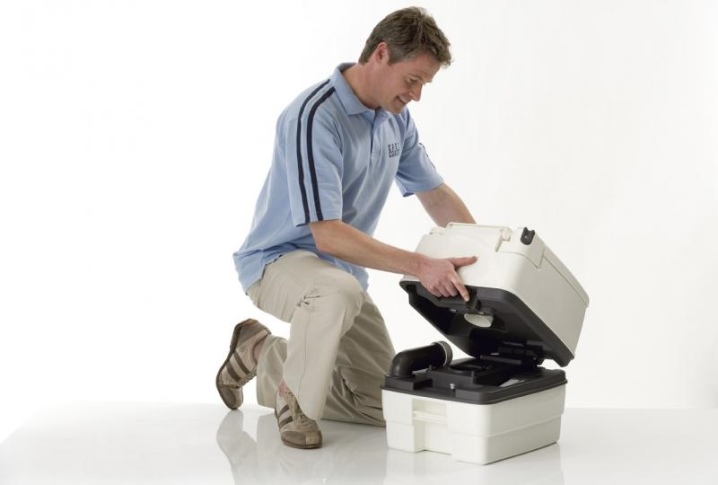
Cleaning
Regular cleaning is important to maintain hygiene. It is necessary to use special products intended for dry closets... Ordinary household chemicals will not work - these compounds can damage seals and other structural elements. You need to clean the inside of the toilet to wash the surface from plaque, and from the outside.
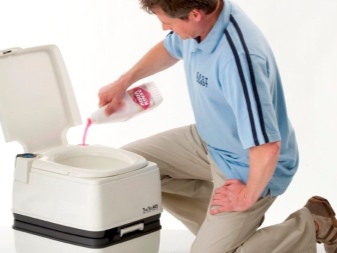
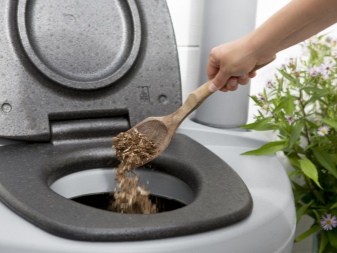
Winter application
Not every toilet is suitable for use during the cold season. The portable model can be brought into a heated room if you want to continue to operate, or put away for storage. Then both tanks must be emptied and cleaned. Rubber seals are lubricated with oil before conservation.If the pump is running on batteries, it is best to remove them.
Some dry closets are also suitable for winter time, if you need just one, check this before buying. Also, at low temperatures, you will have to use special fluids to treat the tank - they act as antifreeze. A similar agent is also added to the water to prevent freezing. In winter, it is advisable to empty the tank more often and carry out cleaning - this helps to avoid the formation of ice... In especially severe frosts, do not leave a full container with waste overnight.
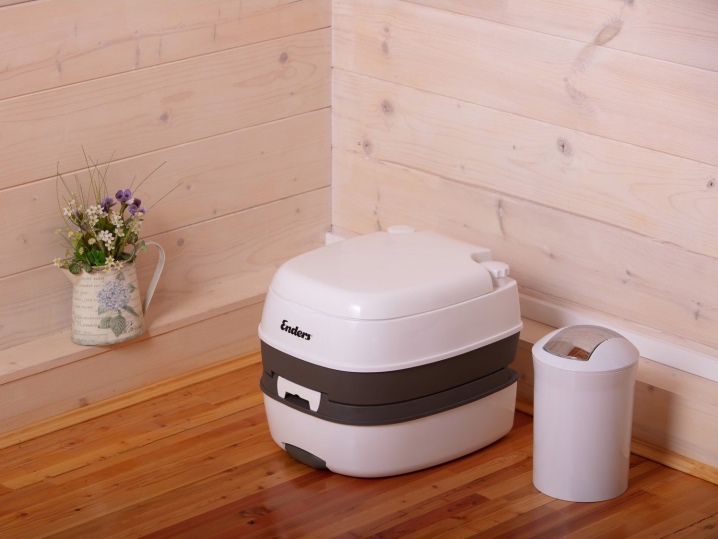
Service
You need to take care of the dry closet, this allows you to extend its life and avoid breakdowns. Portable models are easy to service yourself. Maintenance usually involves cleaning and lubricating the rubber parts. It is important to use the correct fluid for your model. As a rule, the manufacturer indicates what tools will be required for maintenance. Inappropriate liquid can corrode the walls of the storage tank, which will quickly render the tank unusable.
If the toilet has been in use for a long time, it may need minor repairs. Most often break:
- pump pumps;
- electric buttons regulating flush;
- tank lids.
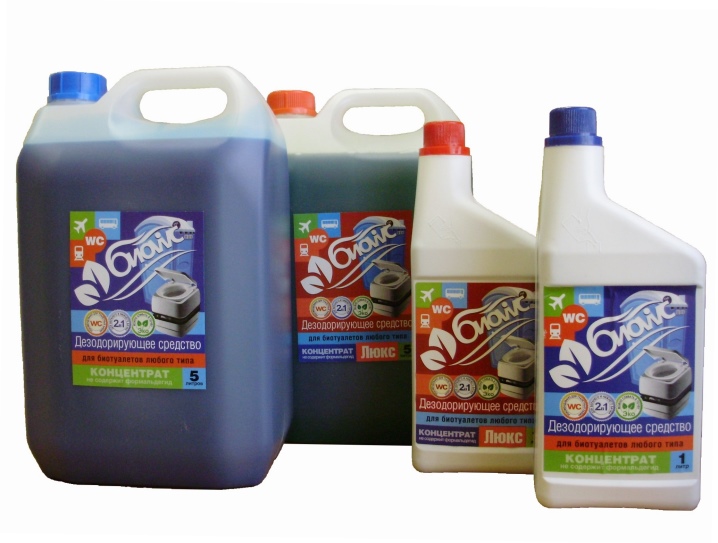
All these parts, if necessary, can be purchased in a specialized store, they are inexpensive. There are also service centers that repair such devices, so in case of a serious breakdown, you can get the help of a specialist.
Compliance with the operating conditions and timely maintenance will allow you to use a convenient dry closet for a long time in the country or at home.













The comment was sent successfully.